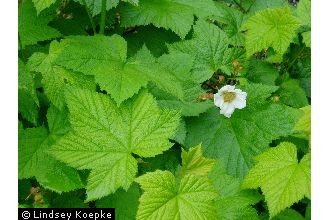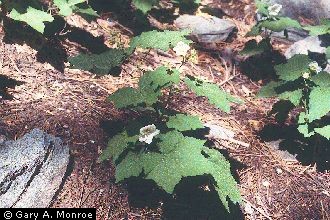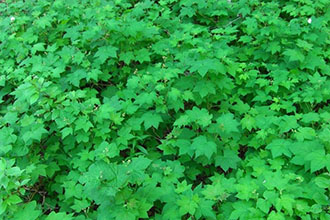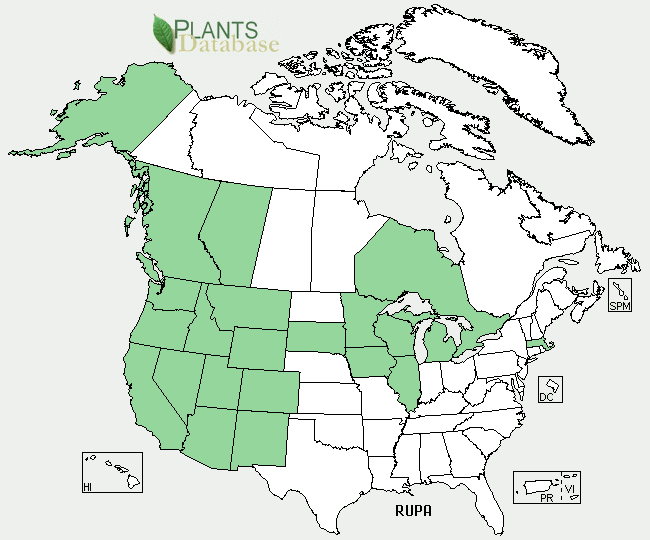Kingdom - Plantae (plants). Subkingdom - Tracheobionta (vascular plants). Superdivision - Spermatophyta (seed plants). Division - Magnoliophyta (flowering plants). Class - Magnoliopsida (dicotyledons). Subclass - Rosidae. Order - Rosales. Family - Rosaceae (rose). Genus - Rubus L. (blackberry). Species - Rubus parviflorus Nutt. (thimbleberry).
Ecology: Thimbleberry grows as an erect, multibranched, leafy deciduous shrub that may reach 3 m tall. Size and distinguishing characteristics relating to leaves, glands, and pubescence can be highly variable. Thimbleberry stems and leaves are thornless. Stems range from 2 to 15 mm in diameter and are typically biennial. In west-central British Columbia, the majority of stems lived 2 years but some lived 3 years and produced large lateral branches. Thimbleberry produces alternate, simple, maple-shaped leaves with 3- to 7-pointed lobes. Leaves generally measure up to 20 cm long and wide and have irregularly serrate margins. Thimbleberry often forms clumps or dense thickets through an "extensive network" of rhizomes. On 1-year-old clearcuts in Oregon's Coast Ranges, thimbleberry shrubs had rhizomes that averaged 201 cm long and 14.4 buds per 1 m of rhizome length.



